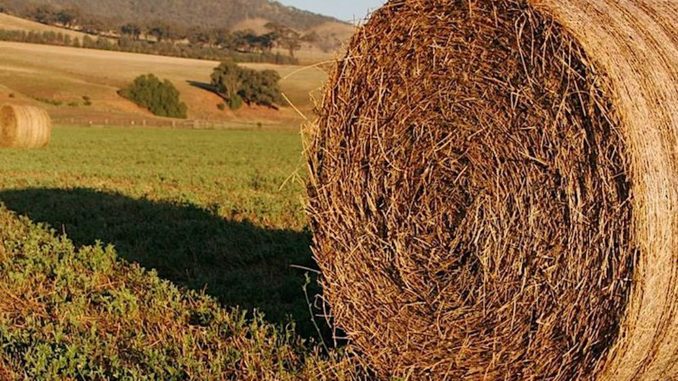
~ Press release issued by Virginia Farm Bureau Federation
RICHMOND — The impact of a dry spell can last long after it’s over, and Virginia farmers are still feeling the effects of 2019’s drought conditions.
The dry period, which began in the summer and lasted through the fall, caused a domino effect for farmers. Grass dried up, and farmers were forced to start feeding hay to their animals months earlier than normal, depleting their winter inventory.
The dry weather also led to a poor fall hay harvest, exacerbating the shortage.
“Farmers all over are looking for hay,” said Cynthia Martel, an agriculture and natural resources agent for Virginia Cooperative Extension in Franklin County. “They’re purchasing hay all across the state, and when it isn’t available, they have to buy out of state.”
Additionally, the high demand for hay is increasing prices. Martel said she has heard that round bale prices are doubling from $40 a bale to $80. Farmers also are hauling it farther, which increases their freight and operation costs.
While pockets of the state have adequate levels of hay, many areas are coping with a shortage.
“The mild winter is allowing farmers to stretch their hay supplies,” Martel explained. “Some farmers have bought peanut hay to add as supplemental feed to their regular hay. Others have been looking for silage as well.”
Peanut hay is made from the plant material left after harvesting peanuts. Silage is green fodder that is preserved through fermentation in a silo and fed to animals when pasture is unavailable. Robert Harper, grain division manager for Virginia Farm Bureau Federation, said some cattlemen have been looking for other feed sources to supplement hay, such as corn gluten and corn stalk.
“It quit raining in the middle of July, and farmers didn’t have any grazing,” Harper said. “They were already feeding their winter hay in August and September, and nobody else had hay for 100 miles. So, last fall, some beef cattle producers decided to roll up their corn stalk [in bales] to use as an alternative feed.”
In addition, pastures have not recovered well after the drought, and Harper predicts farmers will need to continue feeding hay until mid-April.
“There’s going to be a lot of reseeding in the spring and this coming fall,” he added. “That’s going to be a big expense.”



Be the first to comment